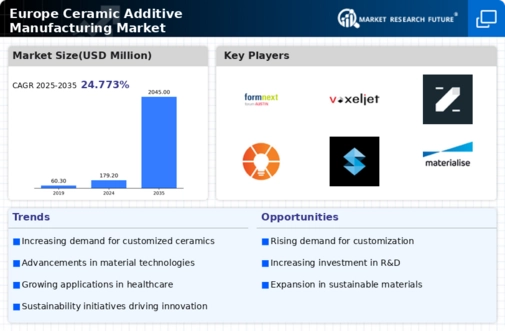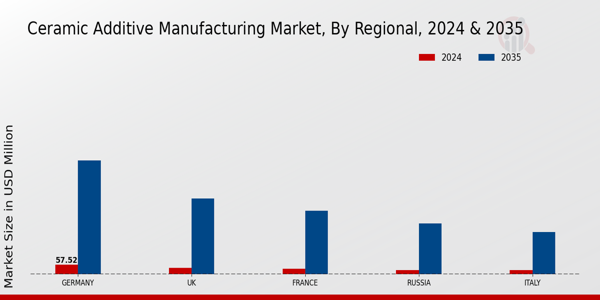The Europe Ceramic Additive Manufacturing Market is experiencing a surge in interest and competition, driven by advancements in technology and an increasing demand for customized ceramic products across various industries. Companies are recognizing the potential of additive manufacturing, which offers innovative solutions for rapid prototyping, design flexibility, and material efficiency. The competitive landscape in this market is intensifying as businesses strive to differentiate their offerings through enhanced quality, sustainability, and tailored solutions.
The market growth is supported by a strong commitment to research and development, with companies investing in new materials and process improvements to capture a larger share of the market. As stakeholders such as manufacturers, suppliers, and research institutions come together, they are forming strategic partnerships that further enhance their competitive edge, paving the way for collaborative innovations in ceramic additive manufacturing.
3D Ceram stands out in the Europe Ceramic Additive Manufacturing Market with its unique approach to delivering high-quality ceramic printing solutions.
The company's strengths lie in its innovative 3D printing technology that enables the production of complex ceramic geometries with precision and efficiency. 3D Ceram has established a solid market presence in Europe, leveraging its expertise to cater to various sectors, including the medical, dental, and aerospace industries. The ability to produce bespoke solutions tailored to specific customer requirements has positioned 3D Ceram as a leader in the ceramic additive manufacturing space. Moreover, the company's commitment to ongoing research and the enhancement of its manufacturing processes ensures that it stays at the forefront of technological advancements in the industry.
This dedication not only solidifies its reputation but also builds strong relationships with clients seeking advanced ceramic applications. Formnext plays a significant role in the Europe Ceramic Additive Manufacturing Market as one of the leading trade fairs dedicated to additive manufacturing. It serves as a pivotal platform for industry players to showcase their latest products and technologies, fostering collaboration and innovation. The event highlights key products and services relevant to the ceramic additive manufacturing space, facilitating networking among manufacturers, suppliers, and researchers.
Formnext's strength lies in its ability to attract top-tier companies and professionals from across Europe, creating an environment conducive to knowledge exchange and partnership formation. The fair includes various workshops, presentations, and exhibitions that emphasize advancements in ceramic materials and processes, enhancing the overall market landscape. Additionally, through organizing strategic mergers and collaborations, Formnext strengthens its influence within the industry, driving growth and innovation in the European ceramic additive manufacturing sector.
























